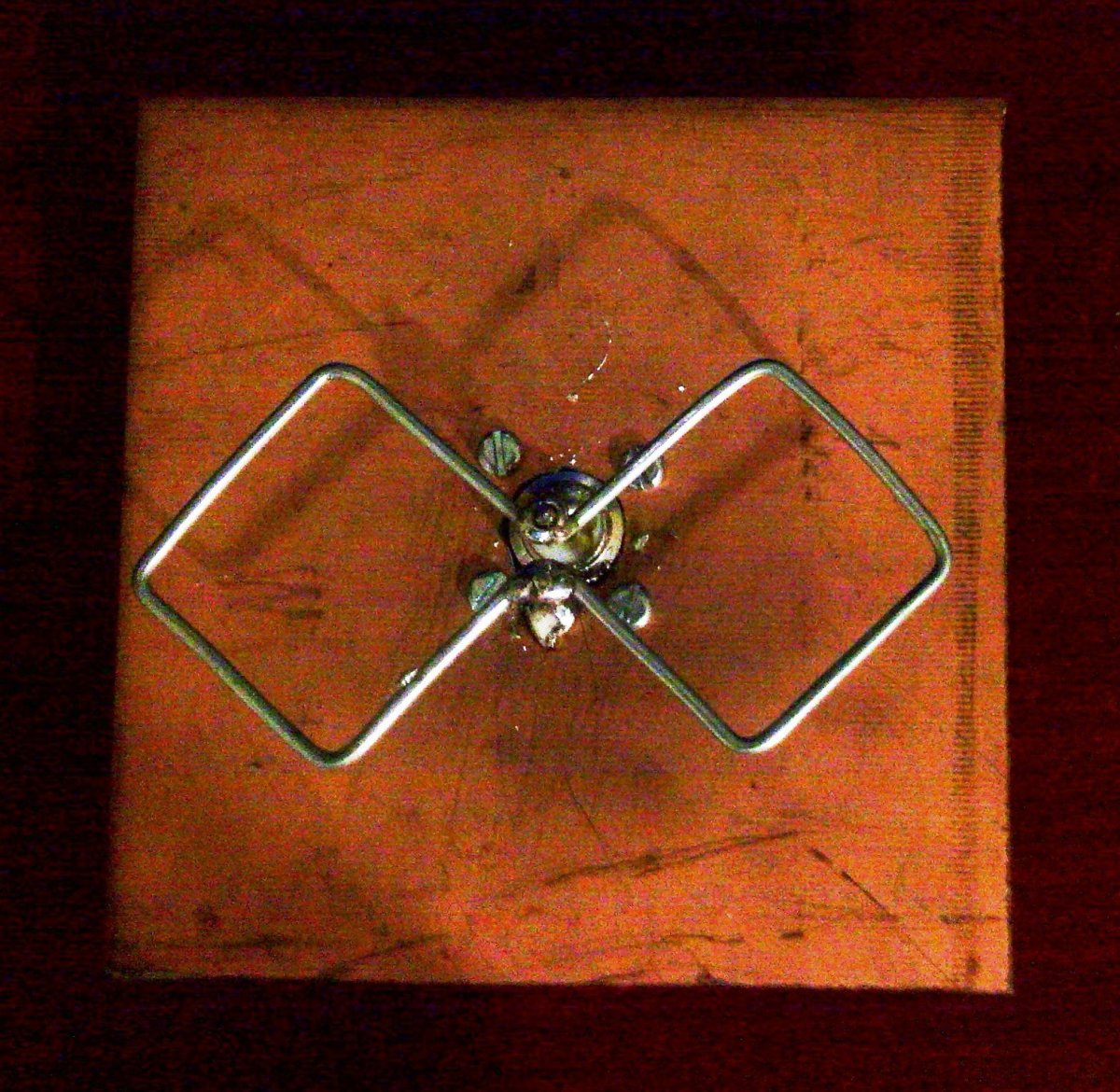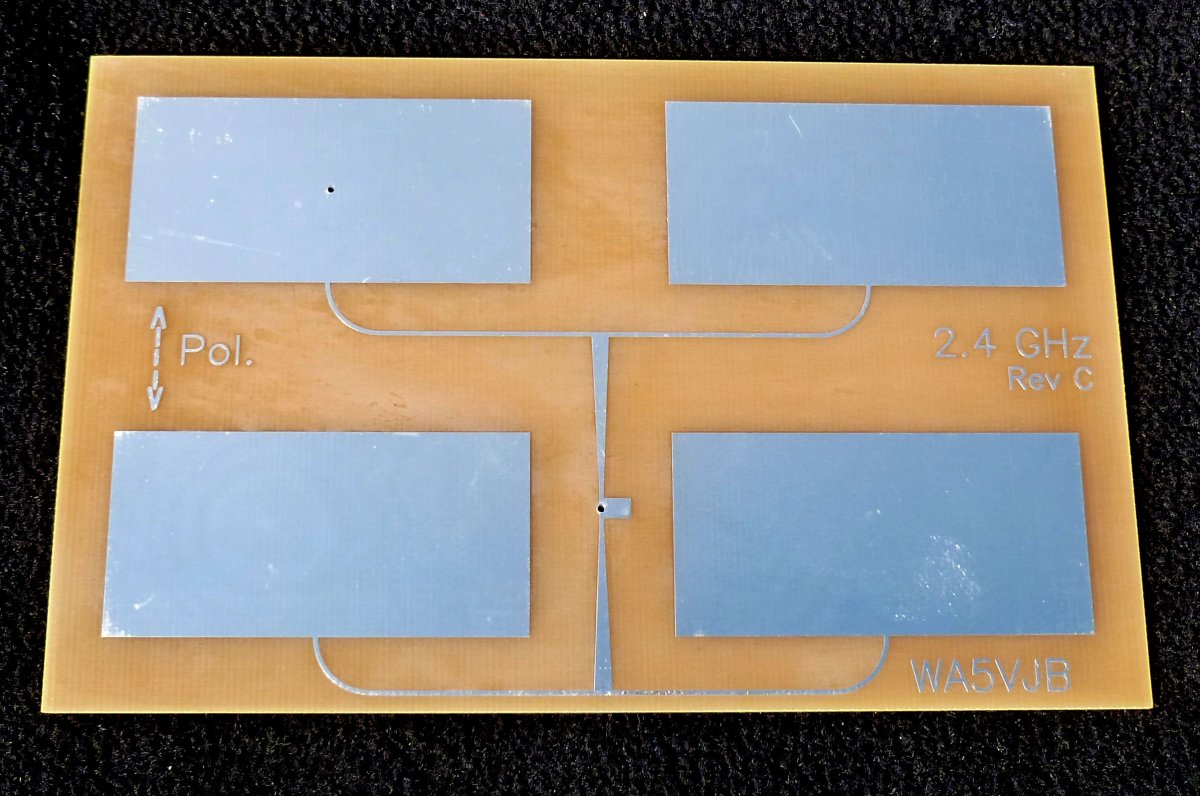How Are Biquad Antennas Used?
Biquad antennas can be used as a stand-alone antenna or as a feed for a dish. The biquad antenna used as a feed for a satellite dish would be smaller than one used as a stand-alone antenna. John Bradley, CC BY-SA 3.0 , via Wikimedia Commons
What Are Benefits of Using Bidquad Antennas?
One point in favor of bidquad antennas is the sheer simplicity. The sides of the square or quad antenna need to be roughly a quarter of a wavelength long, but you don’t have to have it exact. The biquad antenna has a wide beamwidth. It will often have a beamwidth of forty to fifty degrees, if the reflector plate doesn’t have a lip on it. That makes it possible to quickly sweep for a signal source or receive a signal though you’re not pointed directly at it. This makes the biquad antenna is a good alternative to a directional antenna like a log periodic antenna. You can build an omnidirectional antenna out of the bi-quad antenna. Simply create four square loops and connect them to the central feedpoint. Note that making it omnidirectional will sacrifice much of the antenna’s gain. The biquad antenna can be vertically polarized or horizontally polarized. Simply rotate it ninety degrees.
What Are the Weaknesses of Biquad Antennas?
These antennas have a null directly overhead like a dipole antenna would. If the antenna is not inside of a protective cover, the elements can be damaged. It won’t receive the desired frequency at all. That’s one reason why biquad antennas are rarely used in remote control toys over more rugged helix antennas.
How Does a Biquad Antenna Differ from a Patch Antenna?
plane of the PCB (if there is one). And you could make a biquad antenna without a ground plane. This means that bi-quad antennas are not ground plane dependent the way patch antennas are. The patches on a biquad antenna are typically laid out in a diamond shape, touching at the corners with the main feed line. Patch antennas generally put space between the patches, though they will be connected to the main feed line in the middle. Dual patch and quad patch antennas are common, while you’re rarely find a “quad” antenna with more than two patch arrays.
How Do You Make a Biquad Antenna?
Select a copper plate or similar piece to serve as the reflector, unless the biquad antenna will be the focal point for a dish antenna. Bend the wire to make a square, each side one quarter of the wavelength you want to receive. Bend another wire to make a square. Attach the elements to the copper pipe or other main feed in front of your reflector plate, connect to the coax, and you’re done. The elements should be one eighth of a wavelength in front of the reflector plate. Tamara Wilhite You can even make a double biquad antenna. Just make sure the element wires don’t touch where they cross. There needs to be a one to two millimeter gap between them. Why would you want to build a double bi-quad antenna? Because double biquads have far more gain than a biquad antenna. This content is accurate and true to the best of the author’s knowledge and is not meant to substitute for formal and individualized advice from a qualified professional. © 2021 Tamara Wilhite

